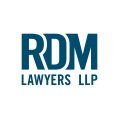Rent-to-Own: risks and considerations
Oct 19 2022
Owing a home is a dream for many British Columbians, but the housing crisis in our province has made the reality of home ownership a challenge. Although average home prices have declined in recent months, the rising interest rates in our country have created further setbacks for British Columbians seeking to enter the housing market. Some people are turning to alternative options, such as rent-to-own arrangements, so they don’t miss out on the current market prices. While this alternative route to homeownership is gaining popularity and traction with some homebuyers, there are several risks that homebuyers ought to consider before turning to the appealing rent-to-own approach.
What is renting-to-Own and why are people pursuing it?
Rent-to-own agreements are typically attractive to renters who want to own their home but are unable to afford a large deposit/down payment to secure a mortgage or even qualify for a mortgage. It involves renting a home for a period with the goal of buying the same property at the end of the lease. A typical rent-to-own agreement is comprised of a lease for a property and an option for the renter to purchase that same property in the future.
To ensure the renter is motivated to purchase the property at the end of the lease, landlords will often require an initial fee that will eventually be applied to the tenant’s future down payment or as a sum that will be discounted from the final purchase price. Upon the commencement of the rental term, renters will usually pay their monthly rent as well as additional regular payments to increase the eventual down payment or discount on the purchase price. The rent-to-own approach is appealing to many renters because if everything goes smoothly during the rental term, they will have had an opportunity to repair their credit and/or save enough money to obtain a mortgage.
Rent-to-own risks and Considerations
The following are some of the risks to entering into a rent-to-own arrangement:
- The costs associated with home maintenance and repairs are often paid by rent-to-own tenants whereas regular tenants under conventional leases are not responsible for these types of costs.
- It often involves the tenant paying higher than market rate rent.
- Locking in a purchase price and home prices later stagnate or start falling (like the market today) and now the tenant is stuck with the deal that may have been entered into months or years prior.
- The tenant may not qualify for a mortgage at the end of the lease. If the tenant fails to eventually purchase the property, they will lose any equity they built in the property as they have failed to comply with the rent-to-own agreement. With increasing mortgage rates and tighter rules like the “stress test”, it is becoming much more difficult for buyers to qualify for a mortgage.
- Future lenders may refuse to acknowledge how much of the higher rent paid by the tenant is an actual down payment. It is the lender’s sole decision what amount may be applied toward the down payment, meaning the tenant may need to come up with additional funds to go towards the down payment.
- The terms of the mortgage a tenant qualifies for may be unappealing. Mortgage rates are increasing and the corresponding payments could be a lot higher than what was expected when the rent-to-own agreement was first signed. This could force the tenant to leave on the table the money they invested in the property if they do not want to enter into the mortgage being offered.
- Tenants risk losing the property if there is a default on any payments required under the rent-to-own agreement. Typically, landlords retain full ownership of the property regardless of how close to the end of the lease term the tenant may be. If a tenant breaches the rent-to-own agreement by missing a payment, then the landlord continues to be owner of the property but the tenant may lose the excess money intended to be paid toward the eventual purchase of the home.
- The landlord may default on their obligations. If the landlord defaults on mortgage payments, there’s a risk that the property will go into foreclosure and the tenant will thereby lose the money they invested in the property.
A few considerations that are key for tenants prior to entering into a rent-to-own contract:
- Be sure that you actually want to buy the property at the end of the term. If the tenant enters into the rent-to-own agreement before residing in the property and it turns out they don’t actually want to live there long-term, there could be steep financial consequences for them.
- Be confident you will qualify for a mortgage when the term ends or run the risk of losing the money already invested in the property. Failing to do so could be catastrophic for the tenant and a major setback in their dream of homeownership.
- The rent-to-own approach is susceptible to scams and shady landlords, and it is the tenant who will likely take on most of the risk by entering into such this arrangement.
Get advice
These are just some of the major risks of the rent-to-own approach, and prospective buyers ought to do their due diligence before entering into a rent-to-own agreement. There are other options available that benefit both landlords and tenants, such as a vendor take back mortgage and our team would be happy review any agreement you are considering or discuss these alternate options with you.
To find out more about rent-to-own agreements and better alternatives, you can reach our real estate team by calling our office at 604-853-0774.

